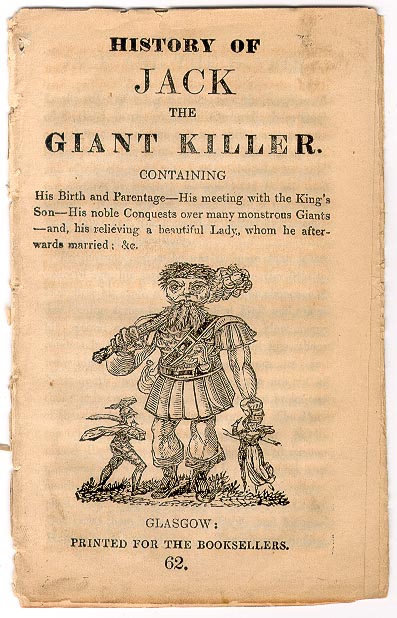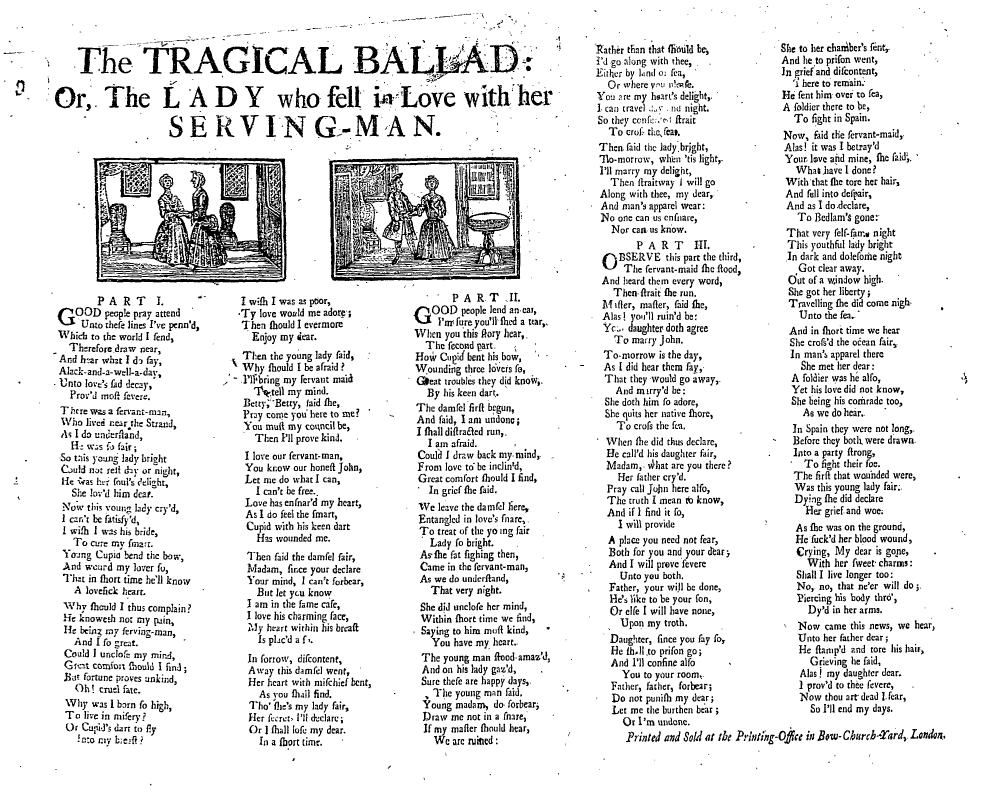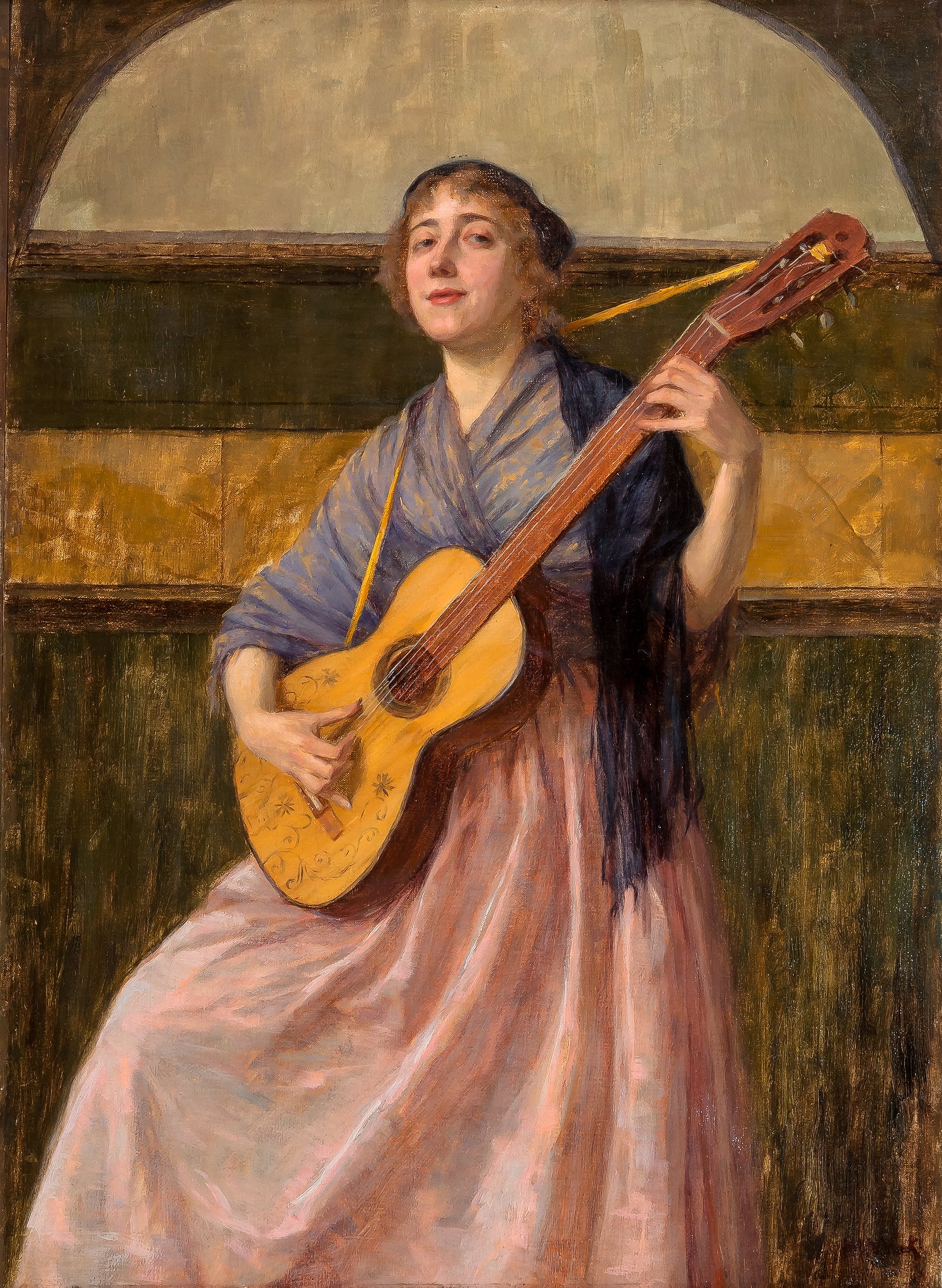|
Chapbook
A chapbook is a type of small printed booklet that was a popular medium for street literature throughout early modern Europe. Chapbooks were usually produced cheaply, illustrated with crude woodcuts and printed on a single sheet folded into 8, 12, 16, or 24 pages, sometimes bound with a saddle stitch. Printers provided chapbooks on credit to chapmen, who sold them both from door to door and at markets and fairs, then paying for the stock they sold. The tradition of chapbooks emerged during the 16th century as printed books were becoming affordable, with the medium ultimately reaching its height of popularity during the 17th and 18th centuries. Various ephemera and popular or folk literature were published as chapbooks, such as almanacs, children's literature, folklore, ballads, nursery rhymes, pamphlets, poetry, and political and religious Tract (literature), tracts. The term ''chapbook'' remains in use by publishers to refer to short, inexpensive booklets. Terminology ''Chapbook ... [...More Info...] [...Related Items...] OR: [Wikipedia] [Google] [Baidu] [Amazon] |
Street Literature
Street literature is any of several different types of publication sold on the streets, at fairs and other public gatherings, by travelling hawkers, pedlars or chapmen, from the fifteenth to the nineteenth centuries. Robert Collison's account of the subject describes street literature as the "forerunner of the popular press". Leslie Shepard's ''History of Street Literature'' identifies a range of different publications as indicated by the subtitle: ''The Story of Broadside Ballads, Chapbooks, Proclamations, News-Sheets, Election Bills, Tracts, Pamphlets, Cocks, Catchpennies, and Other Ephemera''. Street literature therefore includes several different printed formats and publication types. Broadside ballad Broadside ballads are traditional ballads printed on one side of a full sheet or half sheet of paper, often in landscape orientation. Intended to be pasted on to walls for public consultation. Chapbook Chapbooks were small, paper-covered booklets, usually printed on a si ... [...More Info...] [...Related Items...] OR: [Wikipedia] [Google] [Baidu] [Amazon] |
Cordel Literature
Cordel literature (from the Portuguese term, ''literatura de cordel'', literally "string literature", ) are popular and inexpensively printed booklets or pamphlets containing folk novels, poems and songs. They are produced and sold in street markets and by street vendors in Brazil, mainly in the Northeast. They are so named because they are hung from strings to display them to potential customers, and the word for rope in Portuguese is ''corda'', from which the term ''cordel'' is derived. History Cordel literature forms one of the least altered continuations of the Western traditions of popular literature, such as chapbooks, and popular prints. Its history dates back to the 16th century, when the printing of oral reports became popularized in the Renaissance. This genre derives from the '' papel volante'' tradition of Portugal, a literary genre also found in Spain during the 18th and 19th centuries, and offered readers a wide array of topics, from basic instruction to politic ... [...More Info...] [...Related Items...] OR: [Wikipedia] [Google] [Baidu] [Amazon] |
Chapmen
A chapman (plural ''chapmen'') was an itinerant dealer or hawker in early modern Britain. Etymology Old English ''céapmann'' was the regular term for "dealer, seller", cognate with the Dutch ''koopman'' and German '' Kaufmann'' with the same meaning. Old English ''céap'' meant "deal, barter, business". The modern adjective ''cheap'' is a comparatively recent development from the phrase ''a good cheap'', literally "a good deal" (cf. modern Dutch ''goedkoop'' = cheap). The word also appears in names such as Cheapside, Eastcheap, Chepstow and the prefix Chipping: all markets or dealing places. The name of the Danish capital Copenhagen has a similar origin, being derived from ''Køpmannæhafn'', meaning "merchants' harbour" or "buyer's haven". By 1600, the word ''chapman'' had come to be applied to an itinerant dealer in particular, but it remained in use for "customer, buyer" as well as "merchant" in the 17th and 18th centuries. The slang term for man, "chap" arose from the use o ... [...More Info...] [...Related Items...] OR: [Wikipedia] [Google] [Baidu] [Amazon] |
Broadside Ballad
A broadside (also known as a broadsheet) is a single sheet of inexpensive paper printed on one side, often with a ballad, rhyme, news and sometimes with woodcut illustrations. They were one of the most common forms of printed material between the sixteenth and nineteenth centuries, particularly in Britain, Ireland and North America because they are easy to produce and are often associated with one of the most important forms of traditional music from these countries, the ballad. Development of broadsides Ballads developed out of minstrelsy from the fourteenth and fifteenth century. These were narrative poems that had combined with French courtly romances and Germanic legends that were popular at the King's court, as well as in the halls of lords of the realm. By the seventeenth century, minstrelsy had evolved into ballads whose authors wrote on a variety of topics. The authors could then have their ballads printed and distributed. Printers used a single piece of paper known as a b ... [...More Info...] [...Related Items...] OR: [Wikipedia] [Google] [Baidu] [Amazon] |
Lubok
A ''lubok'' (plural ''lubki''; ) is a Russian popular print, characterized by simple graphics and narratives derived from literature, religious stories, and popular tales. ''Lubki'' prints were used as decoration in houses and inns. Early examples from the late 17th and early 18th centuries were woodcuts, followed by engravings or etchings, and from mid-19th century lithography. They sometimes appeared in series, which might be regarded as predecessors of the modern comic strip. Cheap and simple books, similar to chapbooks, which mostly consisted of pictures, are called lubok literature (). Both pictures and literature are commonly referred to simply as ''lubki''. The Russian word ''lubok'' derives from ''lub'' - a special type of board (secondary phloem) on which pictures were printed. Background Russian ''lubki'' became a popular genre during the last half of the 17th century.Dianne Ecklund Farrell, Farrell, Dianne Ecklund. "Medieval Popular Humor in Russian Eighteenth-Century ... [...More Info...] [...Related Items...] OR: [Wikipedia] [Google] [Baidu] [Amazon] |
Ballads
A ballad is a form of verse, often a narrative set to music. Ballads were particularly characteristic of the popular poetry and song of Great Britain and Ireland from the Late Middle Ages until the 19th century. They were widely used across Europe, and later in Australia, North Africa, North America and South America. While ballads have no prescribed structure and may vary in their number of lines and stanzas, many ballads employ quatrains with ABCB or ABAB rhyme schemes, the key being a rhymed second and fourth line. Contrary to a popular conception, it is rare if not unheard-of for a ballad to contain exactly 13 lines. Additionally, couplets rarely appear in ballads. Many ballads were written and sold as single-sheet Broadside (music), broadsides. The form was often used by poets and composers from the 18th century onwards to produce lyrical ballads. In the later 19th century, the term took on the meaning of a slow form of popular love song and is often used for any love song ... [...More Info...] [...Related Items...] OR: [Wikipedia] [Google] [Baidu] [Amazon] |
Children's Literature
Children's literature or juvenile literature includes stories, books, magazines, and poems that are created for children. In addition to conventional literary genres, modern children's literature is classified by the intended age of the reader, ranging from picture books for the very young to young adult fiction for those nearing maturity. Children's literature can be traced to traditional stories like fairy tales, which have only been identified as children's literature since the eighteenth century, and songs, part of a wider oral tradition, which adults shared with children before publishing existed. The development of early children's literature, before printing was invented, is difficult to trace. Even after printing became widespread, many classic "children's" tales were originally created for adults and later adapted for a younger audience. Since the fifteenth century much literature has been aimed specifically at children, often with a moral or religious message. Childr ... [...More Info...] [...Related Items...] OR: [Wikipedia] [Google] [Baidu] [Amazon] |
Ephemera
Ephemera are items which were not originally designed to be retained or preserved, but have been collected or retained. The word is etymologically derived from the Greek ephēmeros 'lasting only a day'. The word is both plural and singular. One definition for ephemera is "the minor transient documents of everyday life". Ephemera are often paper-based, printed items, including menus, ticket stubs, newspapers, postcards, posters, sheet music, stickers, and greeting cards. However, since the 1990s, the term has been used to refer to digital artefacts or texts. Since the printing revolution, ephemera has been a long-standing element of everyday life. Some ephemera are ornate in their design, acquiring prestige, whereas others are minimal and notably utilitarian. Virtually all conceptions of ephemera make note of the object's disposability. Collectors and special interest societies have contributed to a greater willingness to preserve ephemera, which is now ubiquitous in archives ... [...More Info...] [...Related Items...] OR: [Wikipedia] [Google] [Baidu] [Amazon] |
Magdalene College, Cambridge
Magdalene College ( ) is a constituent college of the University of Cambridge. The college was founded in 1428 as a Benedictine hostel, in time coming to be known as Buckingham College, before being refounded in 1542 as the College of St Mary Magdalene. Magdalene counted some of the most prominent men in the realm among its benefactors, including Britain's premier noble the Duke of Norfolk, the Duke of Buckingham and Lord Chief Justice Christopher Wray. Thomas Audley, Lord Chancellor under Henry VIII, was responsible for the refoundation of the college and also established its motto—''garde ta foy'' (Old French: "keep your faith"). Audley's successors in the mastership and as benefactors of the college were, however, prone to dire ends; several benefactors were arraigned at various stages on charges of high treason and executed. The college remains one of the smaller in the university, numbering around 400 undergraduate and 200 graduate students. It has maintained stron ... [...More Info...] [...Related Items...] OR: [Wikipedia] [Google] [Baidu] [Amazon] |
Anthony Wood (antiquary)
Anthony Wood (17 December 1632 – 28 November 1695), who styled himself Anthony à Wood in his later writings, was an English antiquary. He was responsible for a celebrated ''Hist. and Antiq. of the Universitie of Oxon''. He meticulously researched and documented the history of Oxford, producing significant works such as the ''Historia et Antiquitates Universitatis Oxoniensis'' and the ''Athenae Oxonienses''. Despite criticism for errors and suspected biases, his works remain invaluable. Wood had free access to university records, consulted with notable scholars, and faced controversy, including banishment from the University of Oxford. Unmarried, he led a life devoted to scholarship and antiquarian pursuits. Early life Anthony Wood was born in Oxford on 17 December 1632, as the fourth son of Thomas Wood (1581–1643), BCL of Oxford, and his second wife, Mary (1602–1667), daughter of Robert Pettie and Penelope Taverner. His father, who was born in Islington and attended Br ... [...More Info...] [...Related Items...] OR: [Wikipedia] [Google] [Baidu] [Amazon] |
Samuel Pepys
Samuel Pepys ( ; 23 February 1633 – 26 May 1703) was an English writer and Tories (British political party), Tory politician. He served as an official in the Navy Board and Member of Parliament (England), Member of Parliament, but is most remembered today for the diary he kept for almost a decade. Though he had no Maritime pilot, maritime experience, Pepys rose to be the Chief Secretary to the Admiralty under both Charles II of England, Charles II and James II of England, James II through patronage, diligence, and his talent for administration. His influence and reforms at the Admiralty (United Kingdom), English Admiralty were important in the early professionalisation of the Royal Navy. The detailed private diary that Pepys kept from 1660 until 1669 was first published in the 19th century and is one of the most important primary sources of the Stuart Restoration. It provides a combination of personal revelation and eyewitness accounts of great events, such as the Grea ... [...More Info...] [...Related Items...] OR: [Wikipedia] [Google] [Baidu] [Amazon] |








